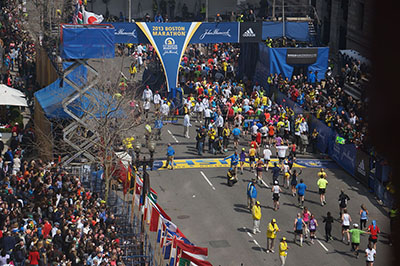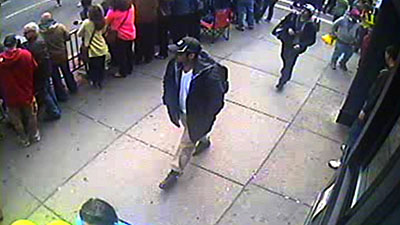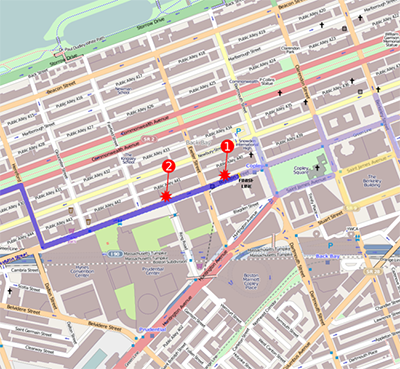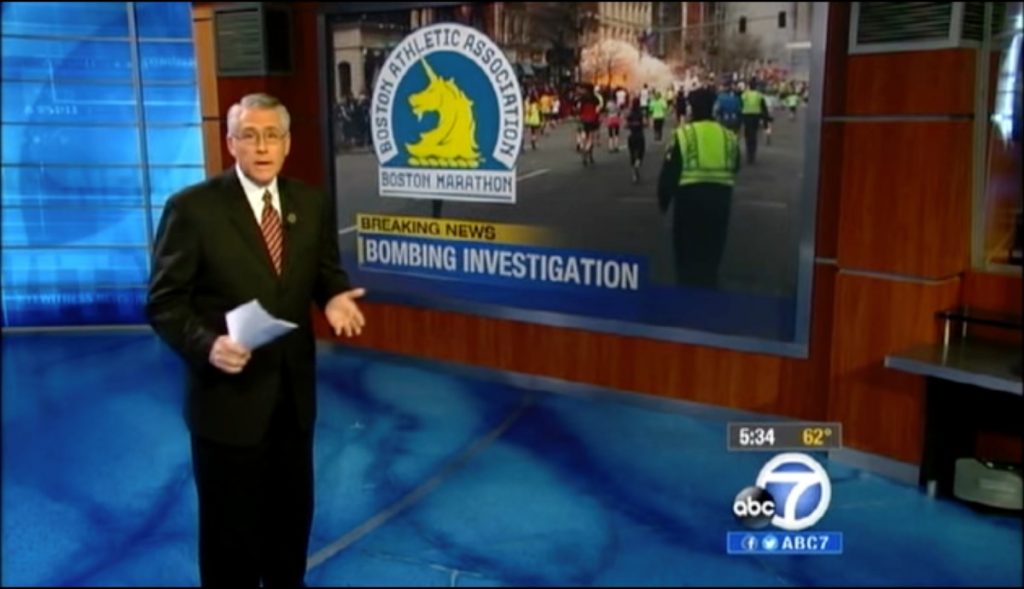Surveillance and solving the Boston Bombing

An aerial view of the finish line, before the explosions, of the 2013 Boston Marathon. This is one of a multitude of images authorities were given to analyze.
The bombings of the Boston Marathon in the afternoon of April 15, 2013 were terrible. Three people were killed and at least 264 were injured by homemade improvised explosive devices. However, three days after the attacks, the FBI was able to release pictures of the two suspects, brothers Tamerlan and Dzhokhar Tsarnaev. How was it that these two were found within a sea of thousands of faces? The answer lies within the video forensics technology of the 21’st century. Although the National Center for Audio & Video Forensics was interviewed regarding the enhancement techniques that may be utilized by forensic experts, NCAVF was not officially part of the investigation.
Thank you for your great info which turned out to be spot on!
–Nancy Aziz, reporter for San Diego 6 news

Digitally enhanced picture extracted from surveillance footage of the two suspects, Tamerlan and Dzhokhar Tsarnaev, casually strolling through the crowd. Note the backpacks each are carrying.
Within hours after the bombings, law enforcement agencies were requesting any and all digital evidence available; not only from security surveillance footage from buildings and stores near the bombings, but from still pictures and video taken by private citizens as well. The public responded. Tens of thousands of still images and hours upon hours of video footage was sent to Boston’s local law enforcement agencies as well as to the FBI.
In fact, three FBI forensics facilities across the country were working on analyzing the audio and video materials.
In an interview with San Diego’s The CW Channel 6 News, David Notowitz said, “It’s a huge task, an enormous task, a lot of man hours [sorting through all the video evidence]. We want to look for people meandering in a strange way. Taking pictures, taking measurements.”
It was these forensics tactics that allowed the FBI to identify the suspects. Video footage showed the Tsarnaev brothers acting differently than most of the others after the bombings. Many of these videos showed that while most people fled the scene, the Tsarnaev’s lingered around, presumably to watch the carnage. When most people were running for cover, the Tsarnaev’s simply walked away casually. This “strange way” of behaving set them apart from the rest of the crowd and thus gave law enforcement pictures of the suspects which was then aired by the media.

This map shows the finish line of the marathon route and locations of the explosions. Using maps such as this, investigators pieced together locations of security cameras that might have recorded suspects. Map is courtesy of Anna Frodesiak.
David Notowitz also explained how useful it is to layer video and audio from multiple sources which is then synchronized and played simultaneously. “It builds on itself in a very interesting way so that if you get multi-layers and multi-screens going on at the same time, with all this evidence, each piece will inform each other.” These audio and video enhancement techniques are what allowed Law Enforcement to not only piece together the events leading up to and after the attack, but it also allowed them to identify the bombers within the huge crowd.
By the evening of April 19, barely four days after the attacks, the manhunt was over. Tamerlan Tsarnaev was dead, killed in a shootout with law enforcement, and an injured Dzhokhar Tsarnaev was in police custody.
Synchronization of multiple surveillance footage sources allows us to combine multiple pieces of evidence into one picture and to have greater perspective and clarity of the events, often from multiple angles and locations.
The capture of the Tsarnaev’s was unique in that both the initial part of the investigation and the identifying of the suspect’s was done almost solely using audio and video forensic and enhancement techniques. As audio and video becomes easier to capture and save, it will continue to be used more and more in ongoing investigations.
Read the transcript of the television news piece.
ABC news Los Angeles interviewed David Notowitz, lead forensic investigator at NCAVF, regarding the search for suspects in the Boston Marathon bombing.
